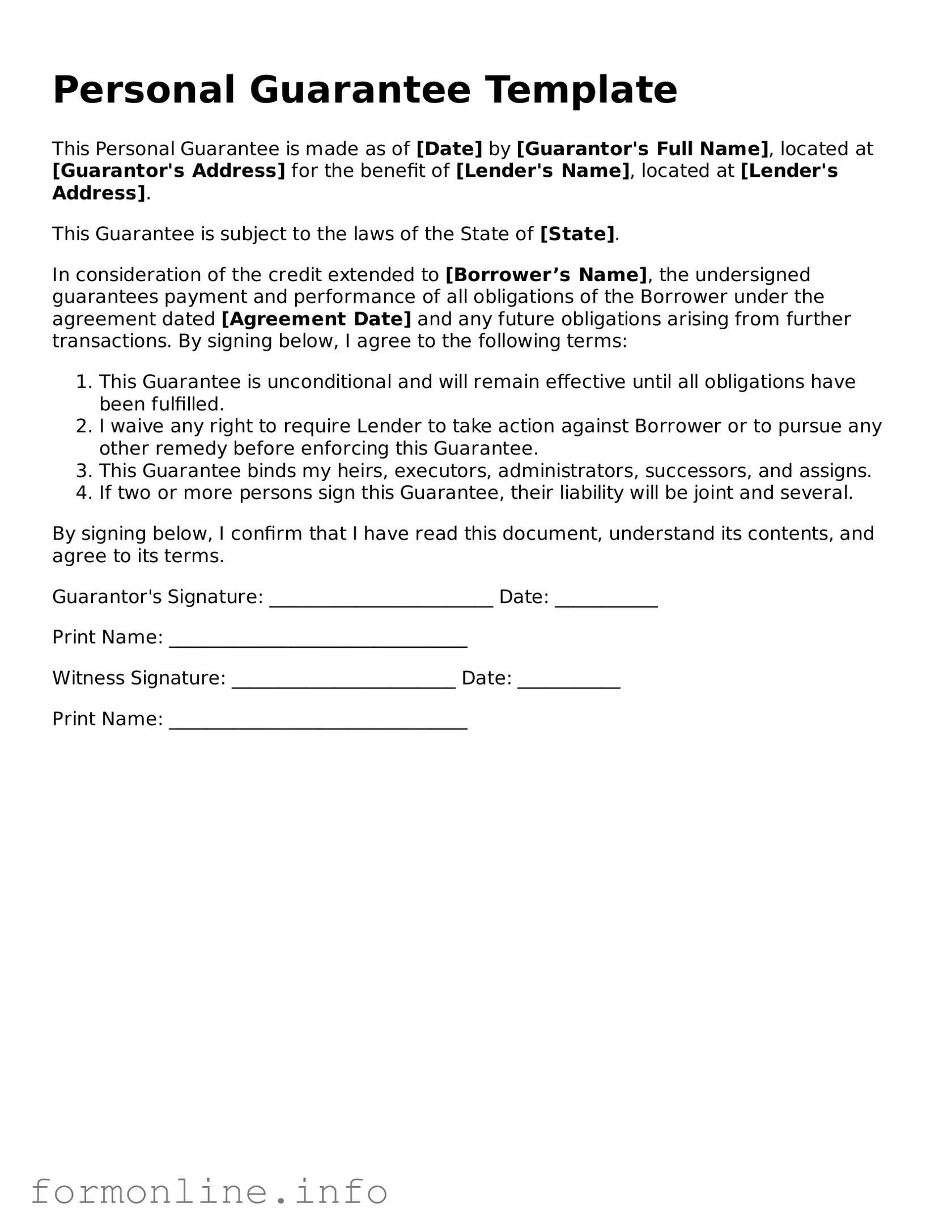A Personal Guarantee form shares similarities with a Lease Agreement, which outlines the terms under which a tenant rents a property from a landlord. Like a Personal Guarantee, a Lease Agreement often requires a signature from a party who agrees to be responsible for fulfilling the terms of the lease, including payment of rent. This ensures that the landlord has recourse if the tenant fails to meet their obligations, much like how a Personal Guarantee secures a lender's interests by holding an individual accountable for a borrower's debt.
Another document that parallels the Personal Guarantee is a Co-Signer Agreement. This agreement is commonly used when an individual applies for a loan or rental property but may not meet the necessary credit requirements. The co-signer agrees to take responsibility for the loan or lease if the primary applicant defaults. Similar to a Personal Guarantee, the co-signer's financial standing is assessed to provide assurance to the lender or landlord, thereby mitigating risk.
A Credit Application also bears resemblance to a Personal Guarantee. When individuals or businesses apply for credit, they often provide personal information and financial history to demonstrate their creditworthiness. In some cases, the lender may require a Personal Guarantee alongside the application to further secure the loan. Both documents aim to evaluate risk and ensure that there is a responsible party accountable for repayment.
The Business Loan Agreement is another document akin to a Personal Guarantee. This agreement outlines the terms and conditions under which a lender provides funds to a business. Often, lenders will require a Personal Guarantee from the business owner, ensuring that they are personally liable for the loan. This adds a layer of security for the lender, as they can pursue the owner's personal assets if the business defaults.
Similar to a Personal Guarantee, a Partnership Agreement outlines the responsibilities and liabilities of each partner in a business venture. When partners enter into an agreement, they often agree to share profits and losses, as well as any debts incurred by the partnership. If one partner fails to fulfill their financial obligations, the others may be held accountable, mirroring the accountability established in a Personal Guarantee.
When navigating the complexities of real estate transactions, it is vital for buyers and sellers to have clear agreements in place, such as the California Real Estate Purchase Agreement form, which ensures all terms are outlined transparently. Similar to other financial agreements, utilizing resources like All California Forms can help streamline the process, providing essential legal frameworks that protect both parties involved.
A Security Agreement can also be compared to a Personal Guarantee. This document is used when a borrower pledges collateral to secure a loan. In essence, the borrower guarantees that if they default on the loan, the lender can seize the collateral. Both documents aim to protect the lender's interests, ensuring that there is a means of recovery should the borrower fail to meet their obligations.
The Indemnity Agreement is another document that shares characteristics with a Personal Guarantee. This agreement protects one party from losses or damages incurred by another party's actions. When someone signs an Indemnity Agreement, they are essentially promising to cover any potential liabilities. This is similar to a Personal Guarantee, where the signer agrees to take on financial responsibility if the primary borrower defaults.
Finally, a Loan Agreement is closely related to a Personal Guarantee. This document details the terms of a loan, including repayment schedules and interest rates. Often, lenders will require a Personal Guarantee to ensure that an individual is liable for the loan, providing additional security. Both documents serve to outline the obligations of the borrower while protecting the lender’s interests.
